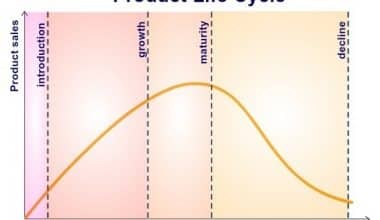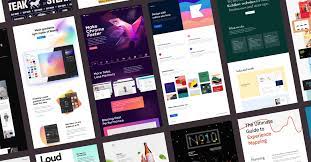One thing that all successful businesses excel at is telling great, compelling stories. The stories are enthralling. They contribute to the development of bonds between us and the storytellers. This is a great opportunity for businesses that want to connect with their target audience. The art of brand storytelling promotes the effective communication of your company’s brand story, which is a summary of its history, mission, purpose, and values. In this article, you will get to know all there is about brand storytelling, how to create one, an example, and the best course and books on brand storytelling.
What Is Brand Storytelling?
The process of developing a series of plot points to create an emotional connection between a brand and its target audience is known as brand storytelling.
A brand story is a narrative structure that brings your company’s history, mission, purpose, and values to life. Brand storytellers who are effective paint pictures of people, events, places, and experiences that connect audiences to the values that a brand stands for.
Why is Brand Storytelling Important?
People are more likely to connect to something on an emotional level, as with many other things in life. Sometimes they don’t even know why. Perhaps it brings back memories from their childhood. Or there is a positive resolution to a problem they are facing. And it is through this emotional connection that a bond is formed.
You want your brand identity, design, and content to create consistent, positive brand associations when it comes to brand storytelling. And it is the marketing team’s responsibility to devise a strategy to accomplish this.
Understanding their audience is an important part of a marketer’s job. What they desire, then What they require, and What is it that keeps them awake at night? Understanding this will assist marketers in creating brand stories that resonate with their target audience rather than simply trying to make a sale. A compelling story-based marketing strategy is more likely to build and maintain strong brand loyalty over time.
The Elements of Powerful Brand Storytelling
Here are some key elements to creating a memorable brand story:
#1. Empathy
Ascertain that your target audience can see themselves in your brand story.
#2. Attention-grabbing
Create and maintain a distinct voice and personality when selling your brand’s story. Your content will be instantly recognizable if you never waver.
#3. Authentic
Be truthful about your values, your company’s distinguishing features, and the challenges you face.
#4. Relatable
Use industry-specific or technical jargon sparingly, and demonstrate that you understand who your customers are and the challenges they face.
#5. Consistency
Your audience should know what to expect from you while also anticipating what comes next.
#6. Aligned with business objectives
Your brand story should be in line with your business objectives and integrated into all aspects of your operation, including marketing, sales, and all internal and external communications.
#7. Incite action
Find a place in your story, as Compare the Market did with Aleksandr, to include a call to action and encourage your audience to become customers.
How to Tell Your Brand’s Story
First and foremost, this is your story. It is possible that delegating the entire task of writing your brand story is a mistake. You can’t outsource your voice because it’s your heart, soul, and story. Furthermore, it is not about convincing them to buy, but rather about convincing them to believe. With that in mind, it’s time to get to work on the writing.
#1. Begin with the fundamentals.
Define your convictions and objectives. What do you hold dear? And why do you have a brand? You can then define your audience’s core desire and the emotional offering that satisfies it. Only then can you begin to delve into the finer points, such as voice, tone, and design.
#2. Pose questions
Start with brainstorming exercises if you’re not a natural storyteller. You can outsource some critical and important questions about your brand. Then respond to those questions and make a few changes.
#3. Listen to your community
Your story should be genuine and timely. And, while your brand story should be personal, it should not be created in isolation. It should not be solely driven by you. Get out there and talk to people in your community to learn about the collective experience of the people you want to speak to.
#4. Write a story, not a list of facts
Your About page functions as an interview. How would you describe your brand to a potential employer or friend? Use the basic story structure outlined in this article to connect the answers to your above questions in a conversational, engaging, and well-paced manner. Also, read it aloud—is this how you would speak? Infuse the values you hold dear. If you’re enthusiastic about your story, it will show in your writing.
#5. And the moral of the story is…?
Many good stories have a moral or a lesson at the end. Let’s call this a call to action for brand stories. Your story should always have an actionable takeaway for the reader. Remember that the goal of the story isn’t always to persuade someone to buy—at least not yet. But what other activities would you like the reader to engage in? Should they tail you? Have you completed a survey? Learn more about the causes you care about. How will you keep the audience interested and nurture them? Perhaps the takeaway is just a feeling you want them to have.
#6. Seek feedback
Working with an editor is a great way to ensure that your voice is presented professionally and polished. If you don’t have the funds to hire a professional, any second set of eyes can be beneficial. Share your draft with several friends who will provide honest feedback, as well as people who resemble your ideal customer.
Once your brand story has been shared with the world, it is not final. Constantly solicit feedback from your customers.
Example of Brand Storytelling
To fully understand the specifications and important factors to consider when creating your brand story, you can refer to a brand storytelling example. Some examples of brand storytelling include:
#1. Airbnb
Because Airbnb is a marketplace, the product itself isn’t interesting enough to warrant a story. Their audience isn’t interested in hearing about the technology and filters that help them find places to stay; instead, they want to hear about their experiences staying somewhere new. They’re curious about the people they’ll be staying with. They want to know about the homes, countries, and experiences made possible by Airbnb’s brand. This is an excellent example of brand storytelling.
Nobody knows those stories better than the hosts and travelers. The Airbnb website includes a section dedicated to providing an inside look at the lives of their hosts around the world.
#2. Marriott’s #AtTheMoxy
Moxy is Marriott International’s new boutique hotel brand aimed at millennial travelers. The brand is a hip mix of luxury-chic lodging, a youth hostel, and an all-night bar. Do Not Disturb is a brilliantly entertaining video series created by Moxy marketers that features the host, Taryn Southern, dishing up her best cheeky antics with social media influencers like Amy Pham and Oli White.
Every episode, uber-cool Instagram shot, and even the hip black and magenta site design tell the Moxy story – and hint at expert mixologist services. What 20- or 30-something with wanderlust can resist? This is also one good example of brand storytelling.
#3. Warby Parker
Warby Parker revolutionized the eyeglass industry by making designer eyewear affordable, environmentally friendly, and simple to try on at home. Their brand is also built on a compelling story. One of their founders missed the first semester of graduate school because he lost his glasses on a backpacking trip and they were too expensive to replace. He and his team decided to address the issue using a plant-based frame construction that is better for the environment.
Everyone does not have access to eyeglasses; 2.5 billion people worldwide require glasses but do not have them. When you purchase a pair of Warby Parker sunglasses, a pair is given to someone in need. That is, your purchase alters someone’s life story by allowing them to work or learn. Warby Parker built their brand on a meaningful story, and they use its channels to do so. This is the last example of brand storytelling on our list, but you can find more inspiration by exploring more examples.
Best Brand Storytelling Books
This is a substantial collection of books on brand storytelling for entrepreneurs and innovators, as well as hard advice on how to make your own story stand out. Here are some of our recommendations:
#1. MADE TO STICK
Chip and Dan’s work was among the first to codify the concept of “stickiness,” or ideas that were literally memorable. It is a crash course in effective communication, with sensible advice applicable from angel funding to IPO. If you haven’t read it yet, start now. This is one of the then-good books on brand storytelling.
#2. STEVE JOBS BY Walter Isaacson
This was the first book in a new genre that profiled entrepreneurs who were coming up with new ideas about how businesses should be run, how employees should work, and what the ultimate purpose of business was. It’s also a fantastic read and one of the good books on brand storytelling.
#3. ONWARD
This compelling story, written by Starbucks CEO Howard Schultz, shows how even the world’s most savvy brands can lose their way. Finally, one of the most effective quest narratives in business storytelling.
#4. ELON MUSK: by Ashlee Vance
Unless, of course, you awoke this morning and decided, “I’m going to democratize space travel today, this is a great read on brand storytelling.
Best Brand Storytelling Course to Look out for
#1. Creative Writing Specialization
Wesleyan University’s Creative Writing Specialization is an excellent example of a well-rounded course. Anyone, from a beginning writer to an established novelist, can benefit from this course.
Writing is a difficult profession because there is insufficient guidance or job opportunities for professionals. As a result, this course can assist writers in further refining their work and assessing their weaknesses. This course is an excellent resource for blog writers, content marketing professionals, novelists, and others. This brand storytelling course is available on Coursera.
#2. Virtual Marketing and How to Craft Contagious content
The course, as the title suggests, assists you in creating contagious content that will be great for your brand storytelling. Businesses can learn how to stay relevant by using virtual marketing and creating contagious content. The course not only teaches the success recipe, but also the pitfalls that lead to failure and how to avoid them. This brand storytelling course also focuses heavily on how to sustain viral content in order for it to be sustainable and start trends. Furthermore, it is available on Coursera.
#3. Leadership Communication for Maximum Impact: Storytelling
Leadership communication with maximum impact: Storytelling is an excellent example of a course that leaders should take. A good leader is essential for any team to function properly. As a result, an excellent leader must have strong communication skills. This course teaches leaders how to communicate effectively in order to establish long-term and profitable relationships with clients, businesses, customers, and communities. Crafting a success story that the team envisions is an important lesson that this course delves into in depth. This brand storytelling course is also available on Coursera.
What are the Four Elements of Brand Storytelling?
Four critical components of brand storytelling include:
- Understand the situation in your story.
- To be universal, be specific.
- Make use of conflict to make your story more interesting.
- Select your heroes.
What is Good Brand Storytelling?
A mix of high-quality content, real-life stories, and customer and employee testimonials. To bring your brand to life, use evidence and facts told in engaging ways. Making an emotional connection by being authentic and human.
What is Brand Storytelling and Why is it Important?
Brand storytelling is a marketing technique that connects a brand to its customers through a creative narrative. This narrative frequently connects a brand’s mission to customer values in order to strengthen the bond. Companies can develop their brand story by using unique characters, settings, and plots.
What are the Types of Brand Storytelling?
Brands Can Tell Various Stories such as:
- Brand narratives.
- Stories about a product or service.
- Customer Testimonials.
- Seasonal Tales.
- Stories from the Community.
- Competitor Case Studies.
- Stories that teach.
- Industry News.
How do you Create Brand Storytelling?
- Determine Your Target Audience.
- Concentrate Your Story on Your Audience.
- Using a Storytelling Framework, brainstorm ideas.
- Write, revise, and polish.
- Iterate after testing with an audience.
- Share Your Story in a Strategic Way.
What are the Three Ps of Creating a Brand Story?
We recommend defining your 3 P’s: Purpose, Promise, and Personality, whether you’re starting a new brand or looking to define who you are as a business.
What are Storytelling Methods?
By providing a basic structure to apply to your personal story, a storytelling method assists you in drawing on what makes all stories work in general. This combination of factors—classic structure and personal originality—allows you to make an impact on your audience.
Conclusion
If you’re ready to begin with brand storytelling, consider using some of the examples above as inspiration and a road map for your own strategy. Make a strong foundational story about who you are, identify your values and areas of expertise, and outline the real-world challenges in those areas.
- Writing a Brand Story the Right Way (Detailed Guide)
- 5 Reasons Why Hiring a Video Production Company is a Great Business Investment
- Social Media Marketing Tips: Top 29+ Tips for Small Businesses
- HOW TO USE INSTAGRAM FOR BUSINESS
- How To Grow Your Instagram Followers & Business Organically in 2023
- HOW TO GO VIRAL: Top Ways to go Viral on Tiktok, Instagram, Twitter & Youtube
- HOW TO REBRAND: Top 15+ Tips to Rebrand Yourself, Business, Social Media & Product






